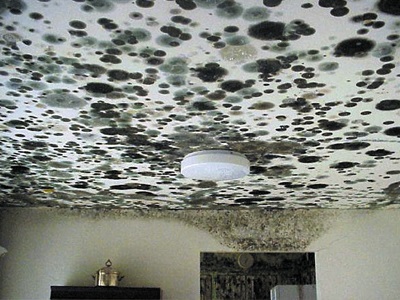Mold
Over the last century, the subject of mold has received its fair share of media attention. It made headlines back in 1929, when scientist Alexander Fleming observed that certain types of mold were capable of killing bacteria. His observation, which led to the discovery of the antibiotic penicillin, revolutionized the practice of medicine.
More recently, mold has garnered media attention again. However, the headlines are of a very different kind. Beware: Toxic Mold warns Time magazine; Toxic Mold: A Hidden Health Hazard reports Newsweek.
So what is the Jekyl and Hyde substance we call mold? In fact, mold is not a single substance but a very large group of plant-like organisms (a type of fungus). They require little to survive only moisture and a food source and, under the right conditions, can grow quickly. Although individual organisms are so small they can only be seen through a microscope, when growth is heavy mold becomes visible.
Molds also spread rapidly. They produce tiny spores that act like seeds; the spores travel through the air, forming new mold growth wherever they find a suitable place to settle.
Because they grow and spread so easily, molds (and mold spores) can be found virtually everywhere. Outdoors, molds play an important role in the breakdown and recycling of organic material like leaves and other foliage. Indoors, however, they serve no particular purpose and can actually be destructive. Heavy indoor mold growth can cause physical damage to the dwelling and health problems for its occupants.
Although molds have been accused of causing a wide array of medical problems everything from headaches and asthma to moodiness and rashes there is evidence to substantiate only a few of these allegations.
Allergic responses are believed to be the most common reaction to mold exposure. Most reactions are relatively mild and are limited to hay fever-type symptoms, such as sneezing, runny nose, cough, burning and itching eyes, and skin rash. In people with asthma, however, an allergic response to mold can cause shortness of breath or even trigger an asthma attack. A rare but serious allergic condition called hypersensitivity pneumonitis can be caused by exposure to very high concentrations of molds.
Not everyone develops allergic symptoms in response to molds. In fact, while some people react to relatively small quantities of them, others can be exposed to large amounts without a problem.
Some molds commonly referred to as "toxic molds" are capable of producing potentially dangerous compounds called mycotoxins. Although there are literally hundreds of molds with similar properties, one mycotoxin-producing mold, Stachybotrys chartarum or "black mold", has received the most attention. In both the medical literature and popular media, Stachybotrys has been linked to a variety of severe illnesses and deaths.
Despite these reports, the relationship between inhaled mycotoxins (those that are breathed in) and human illness is largely unproven. According to the Centers for Disease Control and Prevention, the hazards presented by molds that produce mycotoxins should be considered the same as other molds.
So what should you do if you suspect there's mold in your home? If you can see or smell mold, clean it up. Although all the cleaning products in the world won't totally eliminate mold, a thorough clean-up can go a long way in reducing your exposure to it. For specific instructions regarding clean-up, refer to the California Department of Public Health's guide Mold in My Home: What Do I Do?
The best way to limit your exposure to mold is to restrict its growth by controlling moisture. Inspect your surroundings regularly for signs of excessive moisture and take steps to eliminate any problems you find as quickly as possible. Also, make sure that your home is adequately ventilated.
Testing for molds is not generally recommended. Because the amount of mold necessary to cause health problems varies greatly from person to person, there are currently no available standards for determining what an acceptable quantity of mold is. Moreover, reliable sampling of mold can be very expensive.
You May Be Interested In...
Links
- Mold Fact Sheet - Los Angeles County Department of Public Health
- Mold in My Home: What Do I Do? - California Department of Health Services
- Statement on Building Dampness, Mold, and Health - California Department of Health Services
- A Brief Guide to Mold, Moisture, and Your Home - U.S. Environmental Protection Agency
- Mold - Centers for Disease Control and Prevention
- Molds - U.S. National Library of Medicine and National Institutes of Health
- Mold - National Toxicology Program
- Mold - U.S. Environmental Protection Agency





